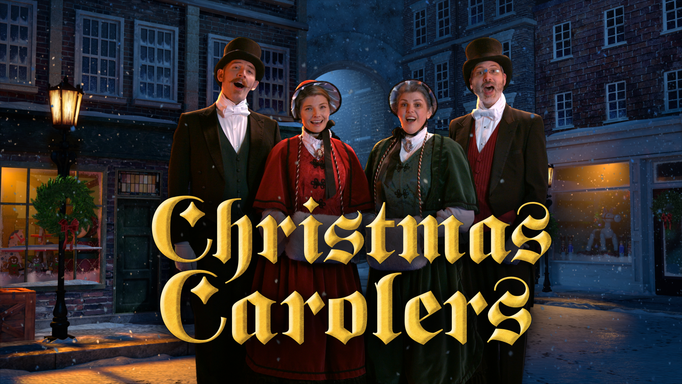The practice of Caroling (dancing to a celebratory song) may have been around for thousands of years but the tradition as we know it today didn't start until Victorian times. Despite their recent origins, most Americans don't know that much about songs we hear hundreds of times, over and over, through a lifetime of Christmas seasons.
Think you know better? Take out a piece of paper and jot down your answers to our caroling quiz. We'll reveal the answers at the bottom. You might find a few (not all) of the answers hidden here and there on the preview page for our new Christmas Carolers decoration. For the really hard ones, you might leave hints (no spoilers) in the comments section below.
Silent Night
- This lyrics of this popular carol, composed in 1818, were originally not in English but in ______________.
- A modern version of this carol became the third-best selling (physical) single of all time after being recorded by ____________ who was born in Tacoma, WA. This singer also holds the #1 spot for physical single sales for another Christmas tune, White Christmas.
Deck the Halls
- Originally a Welsh drinking song dating back to the 16th century, Deck the Halls had all references to alcohol removed by the Pennsylvania School Journal in what year? __________________ {Hint: it is the same year Thomas Edison announced his invention of the phonograph and Queen Victoria was proclaimed "Empress of India."}
- The final two lines of the modern song are, "Sing we we joyous ___________ , ___________ Fa, la, la, la, la, la, la, la, la!"
Jingle Bells
- This popular tune was originally intended for Thanksgiving but it's unclear where and when it was first composed. Two U.S. towns have plagues claiming the honor. They are: ______________ and _________.
- Lesser known than the opening lines, the verses go on to describe a date the singer is on with a young woman named Fanny _____________ during which he got drunk and fell out of the sleigh.
We Wish You A Merry Christmas
- In the modern version of this song (whose author and origins are lost to time) a group of caroler refuse to leave until they "get some ___________________."
- In a British variant, the carolers go on to demand , " __________ and ___________."
It Came Upon A Midnight Clear
- One of the rare carols to focus on more modern times, the poet (Edmund Sears) composed these lyrics as a call for world peace after this war in the mid-1840s: ___________________ .
- It Came Upon A Midnight Clear is usually sung in the key of B-flat major and has this number of stanzas: ____________. {Hint: How many windows are on the upper floor of the left-hand building in the preview video?}
O Christmas Tree
- The lyrics (written in 1824) to O Christmas Tree did not originally refer to a Christmas Tree at all but instead, describe the qualities of an evergreen tree as constant and faithful. The German word we translated to "Christmas Tree" is: _______________________.
- How many US states produce Christmas trees? _____________________.
Ding Dong Merrily On High
- In music theory, this song is in the macaronic style because it mixes languages. These two languages are _________ and ____________.
- The rising and falling notes on the "O" in the word "Gloria" is called a "melisma." How many notes are in the melisma of George Ratcliffe Woodward's Ding Dong Merrily on High? _________________ {Hint: there is one melisma for every day in December}
Here We Come A Wassailing
- This ancient tradition involved singers going door to door, offering (usually wealthier) householders a drink from the wassail bowl in exchange for food, money, or gifts. This practice is traditionally celebrated on January 5th or 6th, which is also known as _____________ or the end of the Christmas season. {Hint, it is also the name of a Shakespearean play}
- In the refrains of this song, the singers demand five things. What are they?
![]()
There they are: a total of eight carols with two questions each. Click the image below to get the answers:



